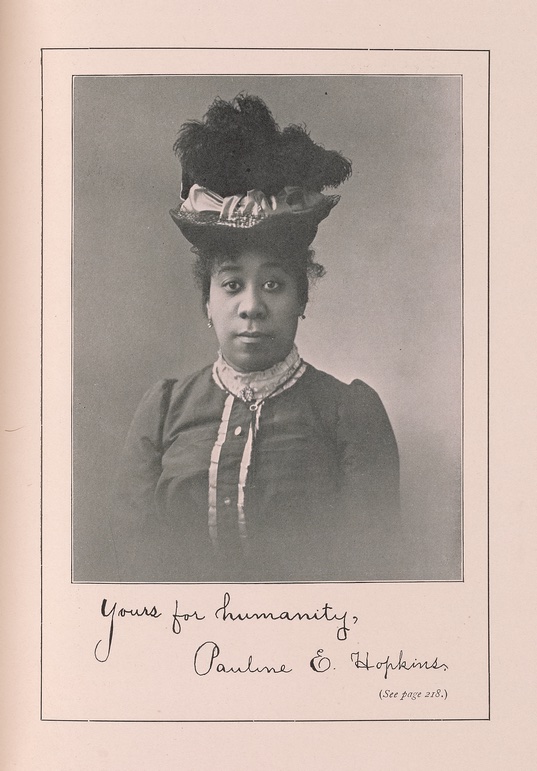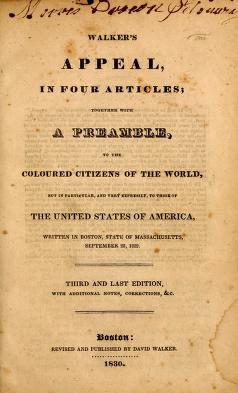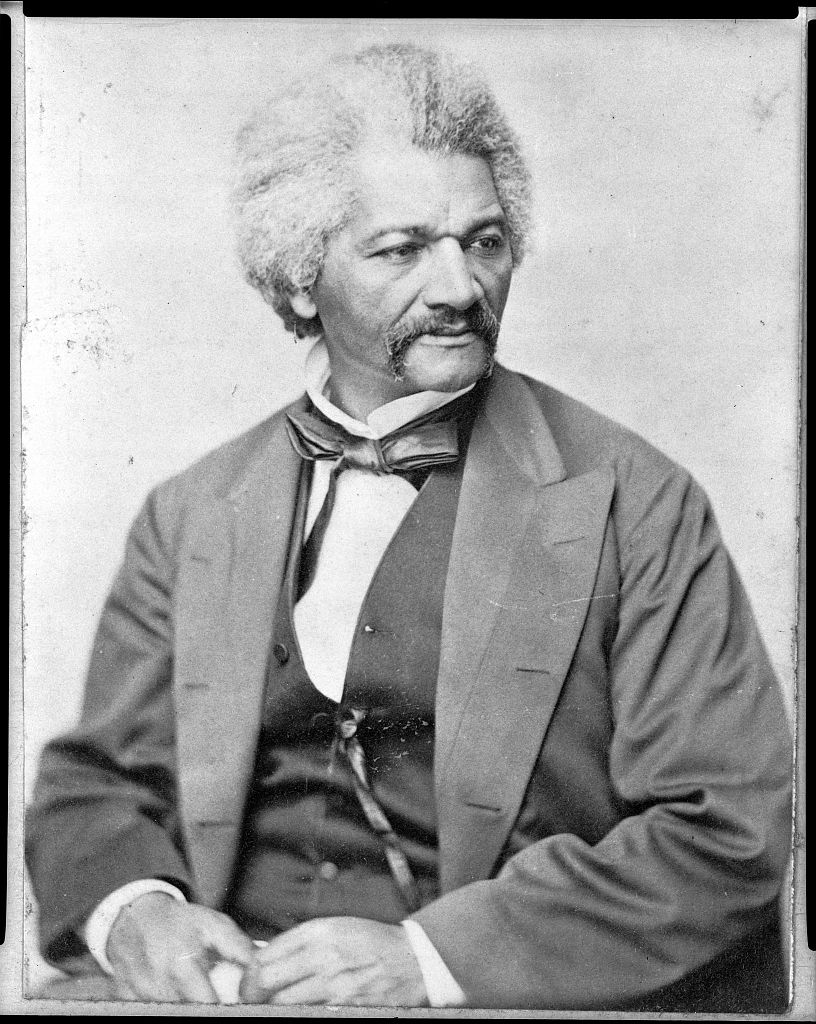Created by Bianca Vranceneau and Savita Maharaj
Introduction
Christianity had an immense influence on the social culture of 19th-century Black Boston, especially in the role it played in “racial uplift.” A term coined by Booker T Washington and W. E. B. Dubois to describe the process of Black people actively working towards excellence and social advancement that would facilitate the “rise” and integration of all Black people within American society.”1

Battey, C. M. “W.E.B. William Edward Burghardt Du Bois.” 1919. Library of Congress. Photograph. https://www.loc.gov/item/2003681451/.
Throughout this exhibit, we will look at various public figures who relied extensively on Christian spirituality and religious rhetorics in their works to emphasize the need for social change and promote racial uplift in an attempt to fuel movements of liberation.
Maria Stewart
“My beloved brethren, as Christ has died in vain for those who will accept his offered mercy, so will it be vain for the advocates of freedom to spend their breath in our behalf, unless with united hearts and souls you make some mighty efforts to raise your sons and daughters from the horrible state of servitude and degradation in which they are placed.”- Stewart, Lecture at Franklin Hall2
In 1832 and 1833, abolitionist and Black nationalist, Maria Stewart published six articles in The Liberator, a popular abolitionist national newspaper at the time.3 In her work, Stewart often used Christian religious imagery and rhetoric to appeal to her diverse audience and strengthen her message of abolition. Stewart portrayed God in two different ways: (1) as gentle and protective of those who were oppressed and (2) as violent and wrathful for those who sinned.4 Although these two ideas seem to contrast each other, there is a fundamental connection between both portrayals that (1) God is aware of the oppressive state in which Black people suffer and despite its horrors, God protects the faithful and (2) God will punish those who go against the basic beliefs of Christianity; which was purposely directed towards her white counterparts. Both white and Black Christians believe in the same God; therefore, God sees them as equal. Stewart held the white community accountable for their actions and used religion to be a motivator for change.

Stewart, Maria. Meditations from the Pen of Ms. Maria Stewart, Library of Congress, 1879, Boston, MA, Text.
Pauline Hopkins
“To our human intelligence, these truths depicted in this feeble work may seem terrible, — even horrible. But who shall judge the handiwork of God, the Great Craftsman! Caste prejudice, race pride, boundless wealth, scintillating intellects refined by all the arts of the intellectual world, are but puppets in His hand, for His promises, stand, and He will prove His words, "Of one blood have I made al! races of men."- Hopkins, Of One Blood 5
Pauline Hopkins was an influential figure during the 19th century. Through her editorial work, fiction, and nonfiction, she addressed Black history, racial discrimination, economic justice, and women’s role in society, emerging as one of the era’s preeminent public intellectuals. Hopkins used religion to provoke thoughtful reflection in her audience as a means to challenging the idea that race as a reason inequality. Instead Hopkins used religion as a tool to illustrate that God sees all of humanity as equal. Her work was effective because she influenced her audience on topics of the importance of racial equality and racial uplift. In her acclaimed novel, Of One Blood6, Hopkins examined the perception of race in society and how race influences peoples’ opinions of one another. Hopkins challenged the racial differences in social statuses by advocatiing for racial equality and through her works, emphasized that race should not be a factor that creates separation in society, as God perceives everyone as equal.

“Pauline Hopkins,” Colored American Magazine, January 1901, pg 218, Digital Photograph.
David Walker
“God will not suffer us, always to be oppressed. Our sufferings will come to an end, in spite of all the Americans this side of eternity”.- Walker, David Walker’s Appeal to the Coloured Citizens of the World7
David Walker was a leader in the Black Boston community. He was a devout evangelical Christian who used religion to appeal for equality among races. Walker is remembered for writing and distributing a pamphlet called David Walker’s Appeal to the Coloured Citizens of the World, where he encouraged the Black community to revolt against racial oppression and break free from slavery. He also accused white Christians for their heinous behavior, calling them savages for treating Black Christians inhumanely. Walker’s Appeal spread throughout the nation, as he used underground networks to transport his works across America (Memorial Project).8 Through doing this, Walker created national momentum in the Black community and inspired them to push for social equality.

Walker David, Walker’s appeal, in four articles; together with a preamble, to the coloured citizens of the world, but in particular, and very expressly, to those of the United States of America, written in Boston, state of Massachusetts, 1829, Text.
Frederick Douglass
“I, therefore, hate the corrupt, slaveholding, women-whipping, cradle-plundering, partial and hypocritical Christianity of the land... I look upon it as the climax of all misnomers, the boldest of all frauds, and the grossest of all libels. Never was there a clearer case of 'stealing the livery of the court of heaven to serve the devil in.' I am filled with unutterable loathing when I contemplate the religious pomp and show, together with the horrible inconsistencies, which everywhere surround me...Here we have religion and robbery the allies of each other—devils dressed in angels’ robes, and hell presenting the semblance of paradise.”-Douglass, Narrative of the Life of Frederick Douglass9
Frederick Douglass was an activist, author, and public speaker. He was active in the abolitionist movement and fought to end the practice of slavery. One of his most notable published pieces was his autobiography, Narrative of the Life of Frederick Douglass, published in 1845. In his autobiography, Douglass recalled his experience as a slave and questioned how white Christians could treat Black people so unjustly and cruelly. Like manyy other Christian activist, Douglass used spirituality to hold white Christians accountable for their actions.

Schreiber, George Francis, “Frederick Douglass Portrait,” 1870, Library of Congress. Philadelphia. Photograph. https://www.loc.gov/item/2004671911/.
1 Gaines, Kevin K, “Racial Uplift Ideology in the Era of ‘the Negro Problem.’”(National Humanities Center).
2 Maria W. Miller Stewart, “Lecture Delivered at Franklin Hall” (1832).
3 Maclean, Maggie,”Maria W. Stewart” (2018).
4 Lewis, John Johnson,“Biography of Maria W. Stewart, Activist and Abolitionist” (2018).
5 Hopkins, Pauline, Of One Blood ( Washington Square Press: 1902).
6 “Biography of Pauline E. Hopkins” (The Pauline Elizabeth Hopkins Society).
7 Walker, David, Walker's Appeal, in Four Articles; Together with a Preamble, to the Coloured Citizens of the World, but in Particular, and Very Expressly, to Those of the United States of America (Boston 1829).
8 “David Walker's Life” (David Walker Memorial Project) 452–48.
9 Frederick Douglass. Narrative of the life of Frederick Douglass, an American slave. Written by Himself. (1818-1895).
Bibliography
Battey, C. M. “W.E.B. William Edward Burghardt Du Bois.” 1919. Library of Congress. Photograph. https://www.loc.gov/item/2003681451/.
“Biography of Pauline E. Hopkins,” The Pauline Elizabeth Hopkins Society. 2014. http://www.paulinehopkinssociety.org/biography/.
Cheyne, C. E.“Booker T. Washington sitting and holding books.” 1903. Library of Congress. Photograph.https://www.loc.gov/pictures/item/2004672766/.
“David Walker's Life.” The David Walker Memorial Project. http://www.davidwalkermemorial.org/david-walker/david-walkers-life.
Douglass, Frederick. Narrative of the life of Frederick Douglass, an American slave. Written by Himself. 1818-1895. https://docsouth.unc.edu/neh/douglass/douglass.html.
Gaines, Kevin K. “Racial Uplift Ideology in the Era of ‘the Negro Problem,” National Humanities Center. http://nationalhumanitiescenter.org/tserve/freedom/1865-1917/essays/racialuplift.htm.
Hopkins, Pauline E. Of One Blood. Washington Square Press, 1902.
Lewis, Jone Johnson. “Biography of Maria W. Stewart, Anti-Enslavement Activist.” ThoughtCo. 2020. https://www.thoughtco.com/maria-stewart-biography-3530406.
MacLean, Maggie. “Maria Stewart.” eHISTORY. https://ehistory.osu.edu/biographies/maria-stewart.
“Pauline Hopkins.” January 1901. Colored American Magazine. Photograph. http://coloredamerican.org/?page_id=548#hopkins.
Schreiber, George Francis. “Frederick Douglass Portrait.” 1870. Library of Congress. Philadelphia. Photograph.
Stewart, Maria. Meditations from the Pen of Ms. Maria Stewart. 1879. Library of Congress. Boston, MA. Text.
Stewart, Maria.“Stewart, ‘Lecture Delivered...," Speech Text.” Voices of Democracy, July 5, 2016. https://voicesofdemocracy.umd.edu/stewart-lecture-delivered-speech-text/.
Walker David. Walker's appeal, in four articles; together with a preamble, to the coloured citizens of the world, but in particular, and very expressly, to those of the United States of America, written in Boston, state of Massachusetts, September 28, 1829 https://docsouth.unc.edu/nc/walker/walker.html.
